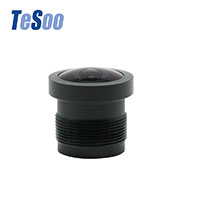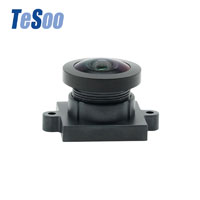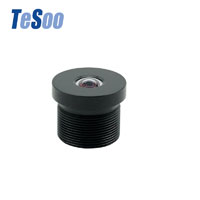CCTV Lens Parameter Related Knowledge
CCTV Lens Parameter Related Knowledge Of Tesoo Lens
1. The imaging size
The imaging size is also the picture size;
sensor imaging size:
The standard format size of the camera tube is used. It is the size of the outer diameter of the camera tube.
2. The focal length
The concept refers to the distance from the center of the lens to the focal point of light gathering. It is also the distance from the center of the lens to the imaging plane of the sensor surface in the module. A 6mm lens field of view means that the focal length is 6mm.
Focal length is very important data, and it will be used in future calculations of the depth of field and FOV.
3. Perspective
There are three types of lenses: standard, wide-angle, telescope lens
Although the area that can be seen by the human eye can reach 180 degrees, the angle that can actually recognize the shape and color is about 50 degrees. The angle of view of the general touch group is 55 degrees to 65 degrees. Of course, it depends on the actual situation of the customer. demand;
With the principle of the seesaw, CCTV lens manufacturers hope to design a larger field of view to meet more sensors, but the larger the field of view, the larger the chromatic aberrations that need to be overcome.
4. Chromatic aberration
Photographic CCTV lenses cannot completely restore a point or a mixed wavelength of light to a point, but a blurred diffuse spot; the image of the object plane is no longer a plane, but a curved surface and the image phase loses similarity All these imaging defects are called chromatic aberrations.
5. Depth of Field & Depth of Focus
1) circle of confusion
Before and after the focus, the light starts to gather and diffuse, and the image of the point becomes blurred, forming an enlarged circle, this circle is called a diffuse circle.
In reality, the images viewed are observed in a certain way (such as projection, zooming into photos, etc.). The images perceived by the human eye have a great relationship with magnification, projection distance, and viewing distance. If the diameter of the diffuse circle is smaller than the discrimination ability of the human eye, the blur produced by the actual image within a certain range cannot be identified. This unrecognizable circle of dispersion is called an allowable circle of dispersion.
Popular Camera Lens
Hot Camera Lens Articles

 English
English 

